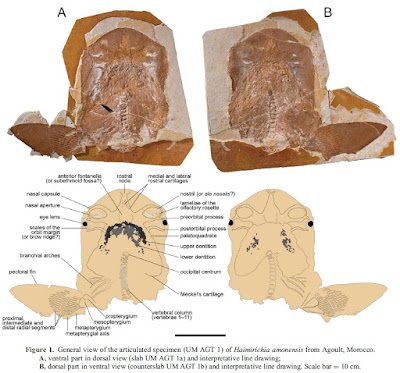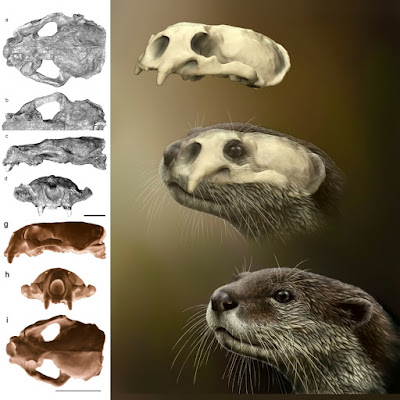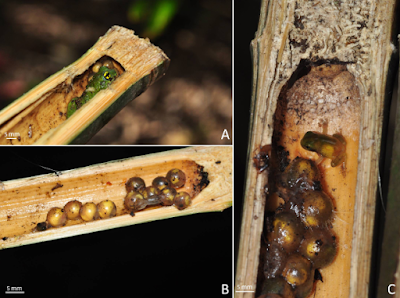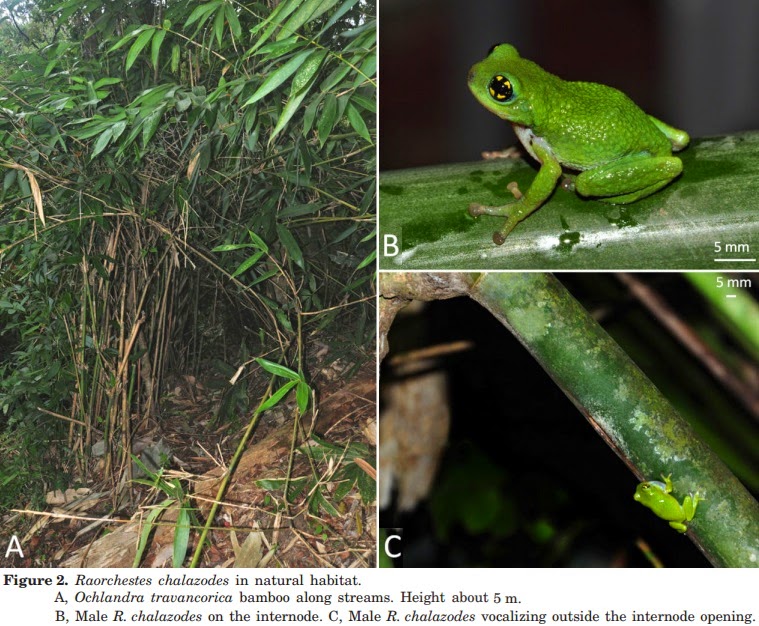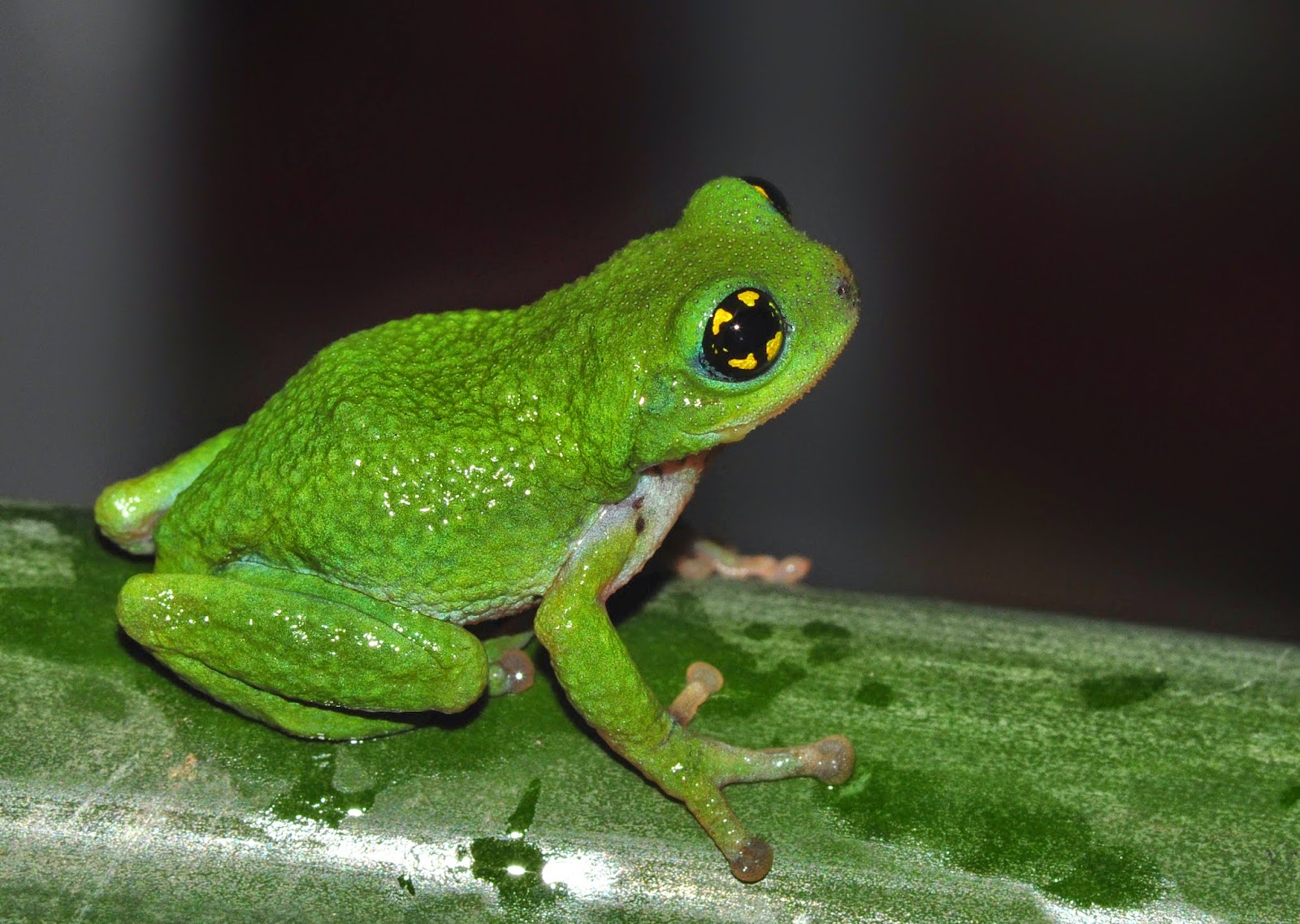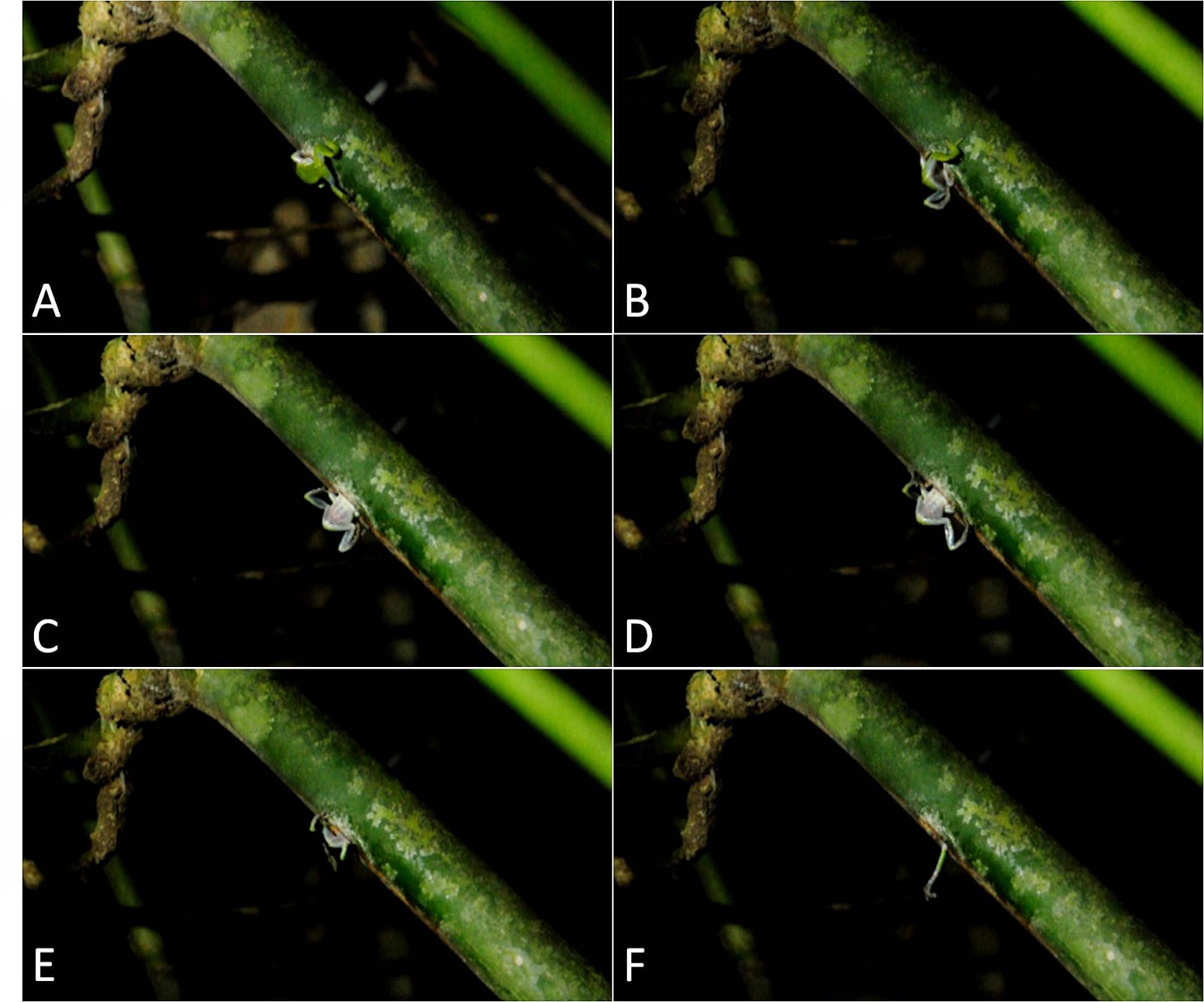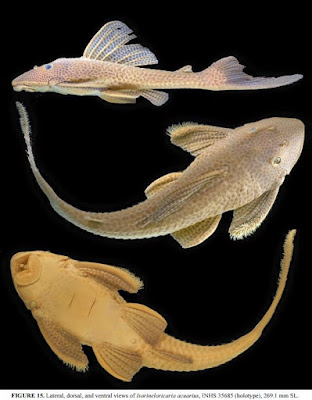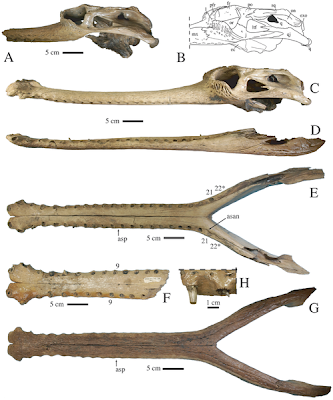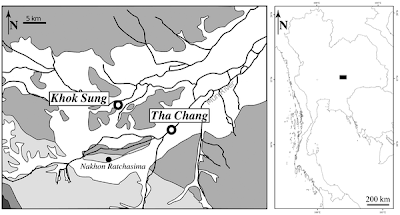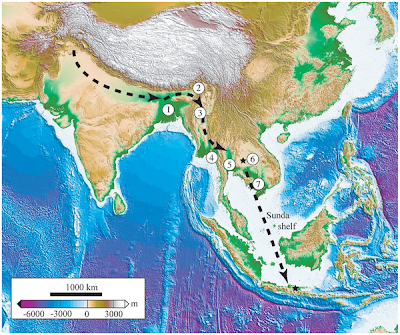[Most Recent Entries] [Calendar View]
Monday, February 8th, 2016
| Time | Event | ||||||||
| 2:13a | [PaleoIchthyology • 2016] The First Articulated Specimen of the Cretaceous Mackerel Shark Haimirichia amonensis gen. nov. (Haimirichiidae fam. nov.) reveals A Novel Ecomorphological Adaptation within the Lamniformes (Elasmobranchii)
Abstract The first shark from the early Late Cretaceous Konservat Lagerstätte of Agoult (south-eastern Morocco) is described. The specimen consists of the anterior part of an articulated skeleton including the cephalic and branchial regions, anterior vertebrae and one pectoral fin. The well-preserved dentition of this specimen indicates that it corresponds to the fossil lamniform originally described as Odontaspis amonensis Cappetta & Case, 1975, a purported odontaspidid species of unclear affinities. The new material provides crucial anatomical data for this taxon, such as head shape, cranial structure, tooth formula, organization of the ampullary system and type of vertebra. Based on these features, this short-snouted, broad-headed shark is confirmed as a member of Lamniformes but is clearly not assignable to any of the known living and fossil genera, and is thus described as Haimirichia amonensis gen. nov. Moreover, this unique set of features, including several autapomorphies, differs sufficiently from those of odontaspidids and other lamniform families (both living and extinct) that it requires the erection of the family Haimirichiidae fam. nov. The articulated specimen of H. amonensis reveals a novel ecomorphological specialization within the Lamniformes, adding to the high disparity observed within this order. During the Cenomanian, H. amonensis was a common, widely distributed species that likely had a lifestyle similar to that of some living medium-sized coastal pelagic carcharhiniform sharks with a comparable overall morphology, such as the whitetip reef shark Triaenodon obesus. Keywords: lamniform sharks, Haimirichiidae fam. nov., Haimirichia gen. nov., ecomorphology, Upper Cretaceous, Morocco Conclusions The lamniform shark Haimirichia amonensis was previously known only from isolated teeth and was thought tobelong to the lamniform family Odontaspididae (sandtiger sharks). By revealing unique morphological features, anatomical study of the new, articulated specimen of H. amonensis demonstrates that this species is not an odontaspididmember and must be assigned to a new genus andfamily within the order Lamniformes. The shape and positionof the orbital processes and the specialized type of dermal denticle directly associated with the electrosensory ampullary system are two of the peculiar, autapomorphic features of Haimirichia. The new articulated specimen shows that H. amonensis was one of the major components of the mid-Cretaceous morphological and ecological lamniform diversification. Haimirichia represents a novel, unique ecomorphotype within lamniforms, and reaffirms the high disparity observed within this order through Late Cretaceous and Cenozoic time (Cappetta 2012, p. 33). The morphological features and occurrences of H. amonensis suggest that this tropical-subtropical shark had life habits and a feeding behaviour similar, at least in part, to those of some extant carcharhiniforms such as Triaenodon obesus and Sphyrna tiburo. As with the extinct anacoracid Squalicorax and the extant carcharhinids Carcharhinus and Galeocerdo (Cappetta 2012, pp. 33, 246), this is another case of parallel evolution between a Cretaceous lamniform taxon and Cenozoic and/or living carcharhiniforms. Romain Vullo, Guillaume Guinot and Gérard Barbe. 2016.The First Articulated Specimen of the Cretaceous Mackerel Shark Haimirichia amonensis gen. nov. (Haimirichiidae fam. nov.) reveals A Novel Ecomorphological Adaptation within the Lamniformes (Elasmobranchii). Journal of Systematic Palaeontology . DOI: 10.1080/14772019.2015.1137983 | ||||||||
| 5:27a | [PaleoMammalogy • 2016] Lutraeximia umbra • A New Otter from the Early Pleistocene of Pantalla (Italy), with remarks on the Evolutionary History of Mediterranean Quaternary Lutrinae (Carnivora, Mustelidae)
Highlights • We describe the cranium of a Lutrinae from central Italy (late Villafranchian). • It is the first otter cranium in the Early Pleistocene of the Mediterranean area. • We refer the specimen to Lutraeximia umbra, gen. et sp. nov. • Phylogenetic analysis allows recognizing a clade of Quaternary Mediterranean otters. • This evidences the past large diversity of Lutrinae in the Mediterranean. Abstract Here we describe a well-preserved sub-complete lutrine cranium from the late Villafranchian (Early Pleistocene) of Pantalla (Italy) and we assign it to the new taxon Lutraeximia umbra, gen. et sp. nov. The new genus Lutraeximia is characterized by a relatively short and large cranium, with a peculiar shape of the postorbital area and a short and vertical muzzle in lateral view. We refer to the same genus the partially complete skeleton of Lutra trinacriae from the Middle-Late Pleistocene of Sicily. Lutraeximia umbra was a medium-large otter (predicted body mass larger than 13.5 kg) with a unique combination of characters in the upper dentition. A phylogenetic analysis based on craniodental characters places Lutraeximia umbra in a monophyletic clade including the living Lutrogale perspicillata plus the extinct Lutrogale cretensis and three Pleistocene otters from Italy: Sardolutra ichnusae and the sister taxa Lutraeximia trinacriae and Lutraeximia umbra. The recognition of this clade evidences the broad diversity of peri-Mediterranean Lutrinae during the Pleistocene. Keywords: Lutraeximia; Lutrinae; Otter; Phylogeny; Pantalla; Villafranchian
Systematic paleontology Class: Mammalia Linnaeus, 1758 Order: Carnivora Bowdich, 1821 Family: Mustelidae Fischer, 1817 Subfamily: Lutrinae Bonaparte, 1838 Lutraeximia gen. nov. Type species: Lutraeximia umbra, sp. nov. Etymology: From the Latin words lutra, otter and eximia, distinct, outstanding. Included species: Lutraeximia umbra, sp. nov.; Lutraeximia trinacriae ( Burgio and Fiore, 1988) (=Nesolutra trinacriae Burgio and Fiore, 1988; Lutra trinacriae Willemsen, 1992). Diagnosis: Lutrinae with cranium relatively short and large; postorbital constriction slightly shorter than its wider section and with a small narrowing in the caudal end; muzzle short and with a nearly vertical rostral margin in lateral view; M1 relatively smaller than P4. Lutraeximia umbra sp. nov. Holotype: SBAU 337654, a sub-complete dorsoventrally compressed cranium missing the mastoid and jugular processes, both P3, left P1 and left I3. The rostral part of the frontals and nasals are ventrally crushed, with the latter collapsing into the nasal cavities. The cranium pertains to an adult individual. Etymology: Umbria is the region of central Italy where the type specimen was found. Type locality, horizon and age: The holotype is from the locality of Pantalla, about 30 km S to Perugia (Italy; 42°52′46.79″N, 12°24′23.26″E; Fig. 2). The mammal assemblage of this locality was recovered from a 15 m-thick stratigraphic succession referred to the Early Pleistocene Santa Maria di Ciciliano Unit (Gentili et al., 1997). Fossils were found in two different levels in the middle-upper portion of the succession: fluvial silty sands below, interpreted as crevasse-splay deposits; silty clays above, interpreted as a drained paleosol (Gentili et al., 1997). SBAU 337654 comes from the former level. Besides the Lutrinae described here, the mammal assemblage includes Apodemus cf. A. dominans, Canis etruscus, Vulpes sp., Lynx issiodorensis valdarnensis, Acinonyx pardinensis, Sus strozzii, Pseudodama nestii, Leptobos aff. L. furtivus, Equus sp., and Mammuthus cf. M. meridionalis ( Gentili et al., 1997 and Cherin et al., 2014). From a biochronological point of view, the assemblage can be referred to the Olivola/Tasso Faunal Units (Gentili et al., 1997), in a time interval ranging approximately between 1.9 and 1.7 Ma (Rook and Martínez-Navarro, 2010). Marco Cherin, Dawid Adam Iurino, Gerard Willemsen and Giorgio Carnevale. 2016. A New Otter from the Early Pleistocene of Pantalla (Italy), with remarks on the Evolutionary History of Mediterranean Quaternary Lutrinae (Carnivora, Mustelidae). Quaternary Science Reviews. 135; 92–102. DOI: 10.1016/j.quascirev.2016.01.008 Todi, trovato cranio completo di lontra preistorica: «Nuova specie tutta umbra» https://shar.es/14qs7N | ||||||||
| 3:55p | [Herpetology • 2015] Breeding in Bamboo: A Novel Anuran Reproductive Strategy discovered in Rhacophorid Frogs of the Western Ghats, India
Amphibians exhibit extraordinarily diverse sets of reproductive strategies among vertebrates. Understanding life history strategies in an evolutionary framework is lacking for many amphibian species in the tropics. Here, we report a novel reproductive mode where adult frogs enter hollow internodes of bamboo via a small opening, deposit direct developing eggs, and provide parental care. This behaviour is observed in two species of the frog genus Raorchestes. The first description of this unique life history and details of nest site characteristics and embryo development are provided along with ecological comparisons. Evolution of novel reproductive modes and parental care are discussed in context of natural selection. Dearth of natural history information on amphibians in the Western Ghats and much of the South-East Asian region is highlighted with suggestions for further studies. Keywords: amphibian ecology; direct development; evolutionary ecology; natural history; parental care; reproductive strategies
 
Kadaba Shamanna Seshadri, Kotambylu Vasudeva Gururaja and David Patrick Bickford. 2015. Breeding in Bamboo: A Novel Anuran Reproductive Strategy discovered in Rhacophorid Frogs of the Western Ghats, India. Biological Journal of the Linnean Society. 114(1); 1–11. DOI: 10.1111/bij.12388 Researchers discover for the first time that a rare bush frog breeds in bamboo https://www.sciencenews.org/article/full Rediscovered in 2010, rare Indian frog surprises by breeding in bamboo http://news.mongabay.com/2014/11/redisco | ||||||||
| 5:13p | [Ichthyology • 2016] The Genera Isorineloricaria and Aphanotorulus (Siluriformes: Loricariidae) with Description of A New Species, Isorineloricaria acuarius, from the Apure River basin of Venezuela
Abstract We review the complex history of those species included in the Hypostomus emarginatus species complex and recognize them in Isorineloricaria and Aphanotorulus. Isorineloricaria consists of four valid species: Isorineloricaria acuarius n. sp., I. spinosissima, I. tenuicauda, and I. villarsi. Aphanotorulus consists of six valid species: A. ammophilus, A, emarginatus, A. gomesi, A. horridus, A. phrixosoma, and A. unicolor. Plecostomus annae and Hypostoma squalinum are placed in the synonymy of A. emarginatus; Plecostomus biseriatus, P. scopularius, and P. virescens are placed in the synonymy of A. horridus; Plecostomus winzi is placed in the synonymy of I. tenuicauda, and one new species, Isorineloricaria acuarius is described from the Apure River basin of Venezuela. Aphanotoroulus can be distinguished from Isorineloricaria by having caudal peduncles that do not become greatly lengthed with size and that are oval in cross section (vs. caudal peduncle proportions that get proportionately longer with size and that become round in cross-section), and by having small dark spots (less than half plate diameter) on a light tan background (vs. spots almost as large as lateral plates on a nearly white background. Keywords: Pisces, Amazonas, Andean, Brazilian Shield, Guiana Shield, Hypostomus, Squaliforma, taxonomy C.K. Ray and J.W. Armbruster. 2016. The Genera Isorineloricaria and Aphanotorulus (Siluriformes: Loricariidae) with Description of A New Species. Zootaxa. 4072(5): 501–539. DOI: 10.11646/zootaxa.4072.5.1 | ||||||||
| 6:10p | [Paleontology • 2012] Gavialis from the Pleistocene of Thailand and Its Relevance for Drainage Connections from India to Java
Abstract Background The genus Gavialis comprises a single living but endangered species, G. gangeticus, as well as fossil species recorded in the Miocene to Pleistocene deposits of the Indian subcontinent. The genus is also represented in the Pleistocene deposits of Java by the species G. bengawanicus, which was recently recognized to be valid. Surprisingly, no detailed report of the genus exists between these two provinces and the recent evolutionary history of Gavialis is not understood. Methodology/Principal Findings We report new material consisting of skull and mandibular remains of Gavialis from the Early Pleistocene of Khok Sung, Nakhon Ratchasima Province, northeastern Thailand. The Gavialis material described herein is attributed to Gavialis cf. bengawanicus and sheds new light on the occurrence of the genus in mainland SE Asia. Conclusions/Significance Comparison of this new material with other species referred to the genus Gavialis led us to preliminary restrict the content of the genus to three species, namely G. gangeticus Gmelin, G. bengawanicus Dubois and G. lewisi Lull. The occurrence of G. cf. bengawanicus in Thailand allows us to propose a scenario for the dispersal of Gavialis from Indo-Pakistan to Indonesia, thus bridging a geographical gap between these two provinces. Dispersal by sea appears a less likely possibility than dispersal through fluvial drainages. Jeremy E. Martin, Eric Buffetaut, Wilailuck Naksri, Komsorn Lauprasert and Julien Claude. 2012. Gavialis from the Pleistocene of Thailand and Its Relevance for Drainage Connections from India to Java. PLoS ONE. 7(9): e44541. DOI: 10.1371/journal.pone.0044541 |
| << Previous Day |
2016/02/08 [Calendar] |
Next Day >> |
